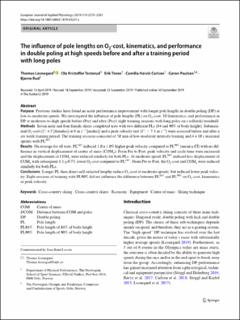| dc.contributor.author | Losnegard, Thomas Johansen | |
| dc.contributor.author | Tosterud, Ola Kristoffer | |
| dc.contributor.author | Trøen, Erik | |
| dc.contributor.author | Carlsen, Camilla Høivik | |
| dc.contributor.author | Paulsen, Gøran | |
| dc.contributor.author | Rud, Bjarne | |
| dc.date.accessioned | 2020-05-05T09:06:00Z | |
| dc.date.available | 2020-05-05T09:06:00Z | |
| dc.date.created | 2019-11-26T11:33:58Z | |
| dc.date.issued | 2019 | |
| dc.identifier.citation | European Journal of Applied Physiology. 2019, 119(11-12), 2579-2587. | en_US |
| dc.identifier.issn | 1439-6319 | |
| dc.identifier.uri | https://hdl.handle.net/11250/2653296 | |
| dc.description | This article is distributed under the terms of the Creative Commons Attribution 4.0 International License (http://creativecommons.org/licenses/by/4.0/), which permits unrestricted use, distribution, and reproduction in any medium, provided you give appropriate credit to the original author(s) and the source, provide a link to the Creative Commons license, and indicate if changes were made. | en_US |
| dc.description.abstract | Purpose: Previous studies have found an acute performance improvement with longer pole lengths in double poling (DP) at low-to-moderate speeds. We investigated the influence of pole lengths (PL) on O2-cost, 3D kinematics, and performance in DP at moderate-to-high speeds before (Pre) and after (Post) eight training sessions with long poles on a rollerski treadmill. Methods: Seven male and four female skiers completed tests with two different PLs (84 and 90% of body height). Submaximal O2-cost (1º; 4.5 [females] or 6 m s−1 [males]) and a peak velocity test (1º; ∼ 7.3 m s−1) were assessed before and after a six week training period. The training sessions consisted of 50 min of low-moderate intensity training and 4 × 10 s maximal sprints with PL90%. Results: On average for all tests, PL84% induced 1.0 ± 1.0% higher peak velocity compared to PL90% (mean ± CI) with no difference in vertical displacement of center of mass (COMz). From Pre to Post, peak velocity and cycle time were increased and the displacement of COMz were reduced similarly for both PLs. At moderate speed, PL90% induced less displacement of COMz with subsequent 1.1 ± 0.7% lower O2-cost compared to PL84%. From Pre to Post, the O2-cost and COMz were reduced similarly for both PLs. Conclusions: Longer PL than skiers self-selected lengths reduce O2-cost at moderate speeds, but induced lower peak velocity. Eight sessions of training with PL90% did not influence the difference between PL84% and PL90% on O2-cost, kinematics or peak velocity. | en_US |
| dc.language.iso | eng | en_US |
| dc.subject | cross-country skiing | en_US |
| dc.subject | cross-country skiers | en_US |
| dc.subject | economy | en_US |
| dc.subject | equipment | en_US |
| dc.subject | center of mass | en_US |
| dc.subject | skiing technique | en_US |
| dc.title | The influence of pole lengths on O2-cost, kinematics, and performance in double poling at high speeds before and after a training period with long poles | en_US |
| dc.type | Peer reviewed | en_US |
| dc.type | Journal article | en_US |
| dc.description.version | publishedVersion | en_US |
| dc.rights.holder | © The Author(s) 2019 | en_US |
| dc.source.pagenumber | 2579-2587 | en_US |
| dc.source.volume | 119 | en_US |
| dc.source.journal | European Journal of Applied Physiology | en_US |
| dc.source.issue | 11-12 | en_US |
| dc.identifier.doi | 10.1007/s00421-019-04237-z | |
| dc.identifier.cristin | 1752341 | |
| dc.description.localcode | Seksjon for fysisk prestasjonsevne / Department of Physical Performance | en_US |
| cristin.unitcode | 150,31,0,0 | |
| cristin.unitname | Seksjon for fysisk prestasjonsevne | |
| cristin.ispublished | true | |
| cristin.fulltext | original | |
| cristin.qualitycode | 1 | |
